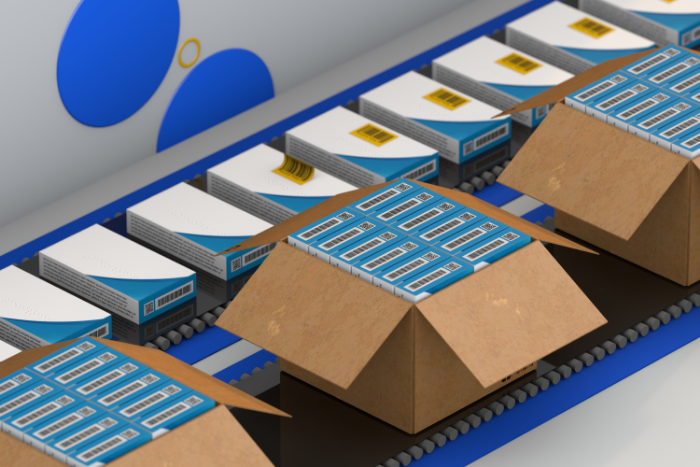Introduction to HBM Packaging Technology
High Bandwidth Memory (HBM) has become a crucial innovation in the world of high-performance computing, artificial intelligence, and gaming. Known for its high data bandwidth, efficiency, and lower power consumption compared to traditional DRAM solutions, HBM is a specialized type of memory that meets the growing demands of data-intensive applications. But as technology advances, so does the approach to packaging and implementing HBM, leading to what we call a “divergence” in HBM packaging technology.
What is HBM Packaging?
HBM packaging refers to the specific method of stacking DRAM (Dynamic Random-Access Memory) chips vertically and connecting them using Through-Silicon Vias (TSVs), enabling high data transfer rates. Unlike traditional memory, which relies on separate, horizontal memory modules, HBM allows for a more compact structure with closer proximity between memory and processing units. This setup provides faster data access with lower energy consumption.
Evolution of HBM Packaging Technology
HBM technology has evolved significantly since its inception. Initially adopted by high-performance graphics and computing systems, the technology now supports AI processing and data centers. The journey began with HBM1, followed by improvements with HBM2, HBM2E, and the latest HBM3, each new version bringing greater bandwidth, better efficiency, and more applications.
Understanding HBM2, HBM2E, and HBM3 Standards
- HBM2: Introduced improved bandwidth and density over HBM1, making it suitable for graphics and AI applications.
- HBM2E: An enhanced version of HBM2, offering greater bandwidth and memory density, widely used in high-performance data centers.
- HBM3: The latest iteration, with even higher transfer speeds, lower latency, and increased density, ideal for demanding AI applications and large-scale data centers.
How HBM Packaging Works
HBM packaging uses a unique stack and die configuration where multiple memory layers are stacked vertically. This structure is made possible by TSVs, which are micro-sized holes drilled through the silicon die, connecting layers of memory and enabling quick data transfers. This architectural design not only increases speed but also significantly reduces the energy required to move data.
Benefits of HBM Packaging Technology
- High Bandwidth: HBM technology provides significantly higher bandwidth than traditional memory solutions, making it ideal for high-performance tasks.
- Efficient Energy Usage: The close stacking and TSV structure reduce the distance data needs to travel, conserving power.
- Compact Design: HBM takes up less physical space, crucial for applications in dense computing environments, such as AI and machine learning.
Applications of HBM in Various Industries
- Artificial Intelligence and Machine Learning: HBM’s high-speed data transfer capabilities make it ideal for AI model training and inference.
- Data Centers: Many data centers rely on HBM to improve processing speed and power efficiency.
- Gaming and Graphics: HBM supports high-definition gaming and graphics rendering by enabling faster data access and processing.
Challenges and Limitations of HBM Packaging
While HBM technology offers numerous advantages, it also has certain challenges:
- Cost: The manufacturing complexity of TSVs and vertical stacking makes HBM more expensive than traditional DRAM.
- Thermal Management: The high density of HBM can lead to overheating, requiring sophisticated cooling solutions.
Current Trends in HBM Packaging Technology
With advancements in HBM3 and research into HBM4, the industry is seeing continuous improvement. Companies like Samsung, SK Hynix, and Micron are pioneering new technologies to push the limits of bandwidth and efficiency further.
Divergence in HBM Packaging Technology
The “divergence” in HBM packaging refers to how different companies and industries are tailoring HBM solutions for specific needs. For example, some manufacturers focus on optimizing bandwidth, while others may prioritize power efficiency or density. This divergence allows for customized solutions across various industries, from AI to consumer electronics.
HBM vs. Traditional DRAM and GDDR
While HBM is more expensive, it outperforms traditional DRAM and Graphics DDR (GDDR) in specific use cases due to its high bandwidth and energy efficiency. For high-performance tasks, HBM is preferred, whereas DRAM and GDDR are more cost-effective for general applications.
HBM Packaging and AI Development
AI and machine learning benefit immensely from HBM’s capabilities. With the ability to process large data sets quickly, HBM accelerates training times and improves AI model performance, making it a preferred choice in the AI industry.
Future of HBM Packaging Technology
Looking forward, the industry anticipates HBM4 and other advancements that will further enhance bandwidth, energy efficiency, and application reach. With AI and data-driven applications on the rise, HBM will likely continue to play a vital role in computing innovation.
Conclusion
HBM packaging technology represents a leap forward in memory performance, offering unprecedented bandwidth and efficiency. As companies explore new ways to customize and improve HBM, the technology will continue to evolve and support various data-intensive applications, from AI to gaming.
FAQs
- What is the primary benefit of HBM over other memory types?
- HBM provides higher bandwidth and efficiency, making it ideal for data-heavy applications.
- Why is HBM important in AI development?
- HBM supports fast data processing, which is essential for training and deploying AI models.
- How does HBM reduce power consumption?
- The stacked design and TSVs reduce the distance data travels, leading to lower power usage.
- Can HBM be used in consumer electronics?
- While possible, the cost and complexity of HBM make it more suitable for high-performance systems rather than consumer electronics.
- What are the main challenges in producing HBM?
- High production costs and the need for effective cooling solutions are some of the primary challenges.




